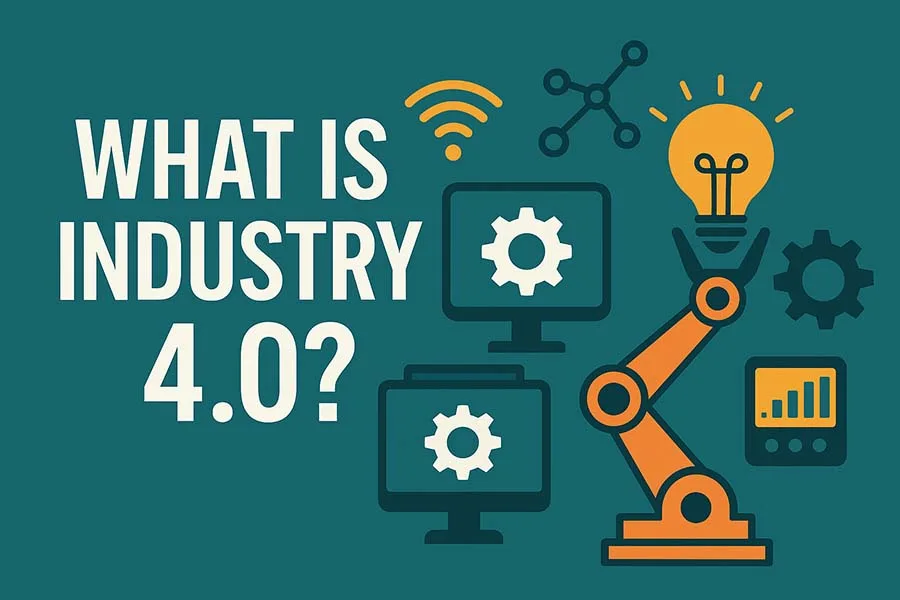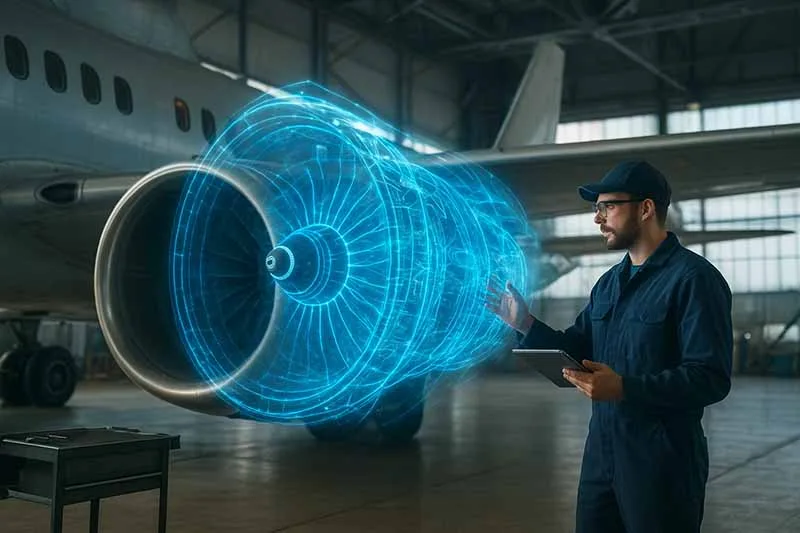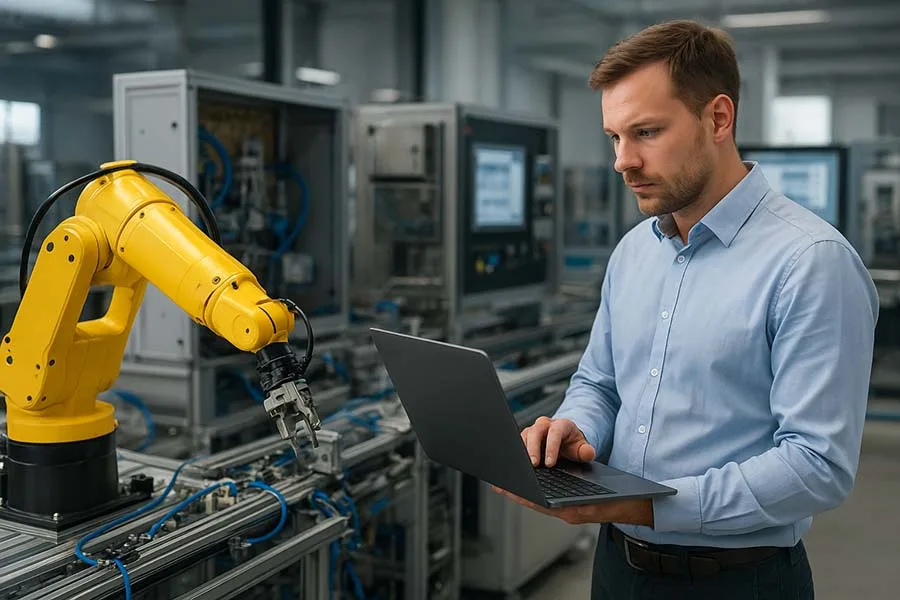Introduction: Why Industry 4.0 Matters Today
If you work in manufacturing, engineering, or supply chain management, you’ve probably heard the term Industry 4.0. At first, it can sound like another corporate buzzword — one that fills slides in conferences but leaves you wondering, “What does it actually mean?”
Industry 4.0 is far more than just hype. It’s the fourth industrial revolution, reshaping how factories, warehouses, and supply chains operate. Unlike previous revolutions — steam engines, electricity, and computers — this one is digital, connected, and happening right now.
This guide breaks down the concept, technologies, benefits, challenges, and practical examples, helping engineers, managers, and curious professionals understand why Industry 4.0 is changing the game.
What Is Industry 4.0?
Industry 4.0 is all about smart, connected systems that bridge the gap between machines, data, and people. It’s about creating “smart factories” where equipment communicates in real time, production adapts automatically, and decision-making is data-driven.
To understand it fully, let’s look at the industrial revolutions that came before:
- Industry 1.0 (Late 18th century): Steam power and mechanization.
- Industry 2.0 (Late 19th century): Electricity and mass production.
- Industry 3.0 (1970s–2000s): Computers and automation.
- Industry 4.0 (2010s–present): Cyber-physical systems, Industrial Internet of Things (IIoT), artificial intelligence, robotics, and big data working together.
In short, Industry 4.0 is not about replacing humans — it’s about enhancing efficiency, flexibility, and intelligence in manufacturing and logistics.
Core Technologies Driving Industry 4.0
Industry 4.0 is an umbrella term for a set of breakthrough digital technologies that transform operations:
1. Industrial Internet of Things (IIoT)
Sensors, smart machines, and connected devices collect data continuously. By analyzing this data, factories can predict failures, reduce downtime, and optimize performance.
Example: Automotive factories monitor assembly lines in real time to catch bottlenecks before they slow production.
2. Artificial Intelligence & Machine Learning
AI enables systems to make decisions based on data patterns. Predictive maintenance, quality control, and supply chain optimization are all powered by machine learning algorithms.
Funny fact: Some factories now have AI systems that can suggest process improvements faster than a human engineer — and sometimes the AI “recommends” ideas humans would never consider.
3. Robotics & Automation
Robots have been around for decades, but in Industry 4.0, collaborative robots (cobots) work alongside humans safely. They perform repetitive tasks efficiently while humans handle problem-solving and supervision.
Example: Cobots assemble electronics components while humans focus on quality inspections and troubleshooting.
4. Digital Twins
A digital twin is a virtual model of a machine, factory, or entire system. Engineers can simulate changes, predict outcomes, and troubleshoot without interrupting actual production.
Lesser-known fact: Some factories maintain digital twins for equipment over 20 years old to optimize upgrades — essentially giving legacy machines a “second life” in the digital world.
5. Big Data & Analytics
Every sensor, machine, and system generates massive amounts of data. Big data analytics transforms this raw information into actionable insights, like spotting inefficiencies or predicting maintenance needs.
6. Cloud & Edge Computing
Cloud computing allows massive datasets to be processed remotely, while edge computing processes data close to the machine for faster decisions. Together, they make real-time control feasible.
7. Cybersecurity
With connectivity comes risk. Protecting machines and data from cyberattacks is crucial. Industry 4.0 companies implement encryption, access controls, and real-time monitoring to stay secure.
Benefits of Industry 4.0
Adopting Industry 4.0 technologies offers numerous advantages:
- Efficiency: Machines self-monitor and anticipate failures.
- Flexibility: Production adapts to custom orders without manual reprogramming.
- Cost Savings: Less downtime, fewer defects, and optimized resources.
- Improved Quality: Continuous monitoring ensures consistent product quality.
- Sustainability: Reduced energy use, waste, and resource consumption.
Example: Some smart factories can adjust energy use in real time, reducing electricity costs by up to 20%.
Challenges and Barriers
While promising, Industry 4.0 is not plug-and-play:
- High Investment Costs: Hardware, software, and integration are expensive.
- Skills Gap: Employees often need retraining to work with advanced systems.
- Cybersecurity Threats: Connected devices can be entry points for hackers.
- Legacy Equipment: Many factories have old machines that are difficult to integrate.
Real-World Applications
Industry 4.0 is no longer futuristic — it’s already being applied in multiple sectors:
Automotive
Connected assembly lines, predictive maintenance, and AI-driven quality control improve efficiency and reduce defects.
Aerospace
Digital twins simulate engine performance and detect issues before planes take flight.
Food & Beverage
Automated production lines monitor temperature, moisture, and quality in real time.
Logistics & Supply Chain
Smart warehouses use IIoT sensors to track inventory, reduce errors, and optimize delivery routes.
Energy
Smart grids balance renewable energy sources, predict load fluctuations, and reduce outages.
Future Outlook: Beyond Industry 4.0
Industry 5.0 is on the horizon, emphasizing human-machine collaboration, creativity, and sustainability. The next revolution won’t replace humans but empower them, blending automation with problem-solving and innovation.
Conclusion
Industry 4.0 is not just another trend — it’s a transformative force shaping competitiveness across industries. Understanding its technologies, benefits, challenges, and applications is essential for engineers, managers, and business leaders.
Whether you’re a small manufacturer exploring automation, or a large company evaluating digital transformation, getting ahead in Industry 4.0 now will pay dividends tomorrow.
👉 Explore our related articles in this category to learn more about smart factories, IIoT, digital twins, AI, robotics, and practical applications of Industry 4.0.





